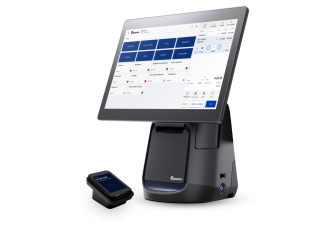How to Approach Small Business Branding
If you’re running a small business, one of the most important things you need to do is create a solid branding strategy. Get your branding right and you could have a great and profitable business for years to come. Get it wrong and you might be courting disaster. Most small businesses don’t make enough money to waste on unsuccessful branding campaigns, so you’ll need to make sure you’re getting everything right to secure as much revenue as you can.
Here are some great branding ideas for small businesses to help you get started.
Know your audience
Every business needs to have a concept of the customers it wants to attract. You need to understand what customers want, their pain points, and their habits in order to create a brand message that will resonate with them. If you don’t know the type of person you’re trying to appeal to, you will make branding and business decisions that will fall on deaf ears.
Think of your ideal customer. What are they like? What solutions are you trying to provide with your product or service? Why are you trying to appeal to them specifically, and not someone else?
A great way to get to know your audience is to create customer personas. These are fictional representations of your ideal customers. They will include information like:
- Age
- Gender
- Occupation
- Education level
- Location
- Cultural channels
- Pain points (ie problems they are trying to resolve)
- Product preferences
Using these personas as a reference, you can start to build different types of branding that you think will appeal to the types of people you outline in your customer personas.
Once you have developed your customer personas, you can start coming up with your brand identity. Try to create a brand identity, or brand personality, that you think will appeal to your customer personas.
You’ll also want to continually collect information from your customers over time so that you can make effective branding decisions. Conduct customer surveys through your email marketing system to find out your customers’ ever-changing preferences and concerns.
Don’t be afraid to fail
We know what you’re thinking: no one plans on failing when they start a new business, so why would you think about it at all?
Well, it’s in our failures that we learn our greatest lessons.
If you’re starting out with a new small business, it’s likely you’re just getting a feel for your audience and customer base. Doing things like creating customer personas are great for informing your business and branding strategies, but they can only take you so far. You’ll have to take the plunge and experiment with different types of messaging and branding. Don’t be afraid to try something out and have it fail. If it fails, you’ve discovered one more way not supposed to do it.
Know your industry
Some companies need a strong brand in order to stand out from the crowd and attract customers. However, having a strong brand personality may not be the best thing for your business. Ian Cowley, managing director of Cartridge Save, believes that the failure of many of his brand personalities led him to refocus on the basics.
“Even if you’re in an unsexy market, it isn’t necessary to conjure up a personality for your brand,” says Cowley. “It might be important if the brand is aspirational and needs to fit into a particular lifestyle but if your business provides something customers need, rather than want, then prices and service may well be more important than brand personality.” [1]
Embrace the power of design
All aspects of branding design, from your color scheme to your logo, have to create the right impression.
Unless you have a graphic designer on your staff, or you have experience in design yourself, it’s best to hire a graphic designer to do your marketing materials, site designs, and logo.
You’ll also want to create a set of brand guidelines that can be distributed to all your staff. This guide would contain rules around how marketing materials should deploy colors fonts, tone of voice, the formality of your language, and other aspects of brand identity. Once you have this document, stick to it religiously across all your communication channels. Doing so will ensure that you have a consistent voice across all your channels, solidifying your brand’s style and personality. Customers want to experience your company in a consistent manner. Make sure you set yourself up for success.
Put work into your brand name
Coming up with a great brand name is perhaps one of the most important things you can do for your business. Your business name will stand for your business as a whole in the minds and mouths of the public for years to come, so make sure it’s one you’re happy with and that captures the essence of your business.
Your business name should resonate with the right people, create excitement and interest, and be easy to understand. You’ll also want to make sure the name you have in mind is available by checking your local and national registries - you don’t want to infringe on anyone’s trademark.
Network and collaborate with other small businesses
As a small business, you need to differentiate yourself from the medium and large organizations that you’re competing with. You may not have their size, budgets, or customer base, but you have a weapon in your arsenal you may not expect: other small businesses.
Your fellow small businesses will be in the same boat as you: trying to survive and eke out a living. You’ll probably share the same goals, frustrations, and challenges. So why not work together?
There may be loads of small businesses in your area that would jump at the chance to collaborate with you on branding campaigns to help both of you generate more awareness for each other.
If you’re a restaurant, you may want to consider working with your local coffee shops, bars, and other establishments to promote each other’s services. You could come to an agreement with your local dry cleaner that everyone who buys coffee from your cafe gets 5% off their dry cleaning bill, and everyone who makes a purchase over a certain amount at the dry cleaner gets a free coffee at your cafe.
When customers see that they will get more from buying from you, they’ll be more likely to frequent your business.
Create great marketing campaigns right from your POS
Another way to establish your company’s brand is to create stunning email marketing campaigns. With effective email marketing campaigns, you’ll be able to drive repeat business with your best customers and establish relationships that could last a lifetime.
You can actually manage email marketing campaigns right from your POS terminal when you choose Epos Now. With apps like Mailchimp, you can create personalized email marketing campaigns to build better relationships with your customers.
- Track open and clickthrough rates of your campaigns
- Conduct A/B testing to see which campaigns are working the best
- Import Epos Now customer data for more personalized emails
- Convert lost sales by sending emails about abandoned shopping carts
- Customize your emails with an easy-to-use drag and drop builder
- Build automated campaigns that follow a set sending schedule
Contact Epos Now to learn more about our apps.




